-
 Teresa Greve Wolf Installation (8)
Teresa Greve Wolf Installation (8) Photo from "Teresa Greve Wolf: Art That Reflects the Times" in Moreau Gallery from Dec. 2 through Dec. 11 2024.
-
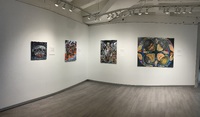 Teresa Greve Wolf Installation (7)
Teresa Greve Wolf Installation (7) Photo from "Teresa Greve Wolf: Art That Reflects the Times" in Moreau Gallery from Dec. 2 through Dec. 11 2024.
-
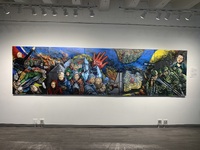 Teresa Greve Wolf Installation (6)
Teresa Greve Wolf Installation (6) Photo from "Teresa Greve Wolf: Art That Reflects the Times" in Moreau Gallery from Dec. 2 through Dec. 11 2024.
-
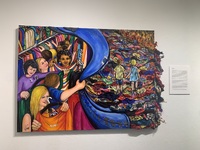 Teresa Greve Wolf Installation (5)
Teresa Greve Wolf Installation (5) Photo from "Teresa Greve Wolf: Art That Reflects the Times" in Moreau Gallery from Dec. 2 through Dec. 11 2024.
-
 Teresa Greve Wolf Installation (4)
Teresa Greve Wolf Installation (4) Photo from "Teresa Greve Wolf: Art That Reflects the Times" in Moreau Gallery from Dec. 2 through Dec. 11 2024.
-
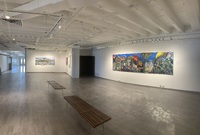 Teresa Greve Wolf Installation (3)
Teresa Greve Wolf Installation (3) Photo from "Teresa Greve Wolf: Art That Reflects the Times" in Moreau Gallery from Dec. 2 through Dec. 11 2024.
-
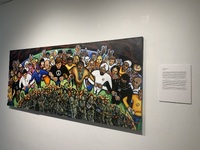 Teresa Greve Wolf Installation (2)
Teresa Greve Wolf Installation (2) Photo from "Teresa Greve Wolf: Art That Reflects the Times" in Moreau Gallery from Dec. 2 through Dec. 11 2024.
-
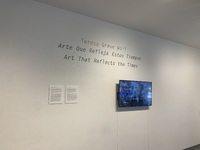 Teresa Greve Wolf Installation (1)
Teresa Greve Wolf Installation (1) Photo from "Teresa Greve Wolf: Art That Reflects the Times" in Moreau Gallery from Dec. 2 through Dec. 11 2024.
-
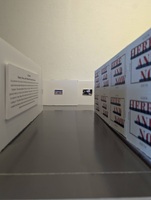 Maquette (4)
Maquette (4) Physical model of maquette created for Curatorial Studies, Fall 2024.
-
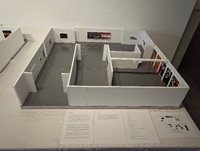 Maquette (3)
Maquette (3) Physical model of maquette created for Curatorial Studies, Fall 2024.
-
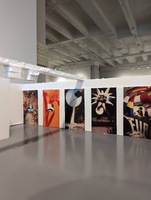 Maquette (2)
Maquette (2) Physical model of maquette created for Curatorial Studies, Fall 2024.
-
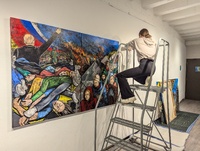 Preparing Greve Wolf Installation
Preparing Greve Wolf Installation Students work to set up "Teresa Greve Wolf: Art That Reflects the Times" in Moreau Gallery.
-
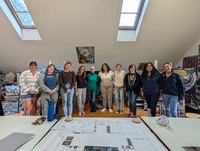 Teresa Greve Wolf Studio Visit (4)
Teresa Greve Wolf Studio Visit (4) Students from Curatorial Studies visit Teresa Greve Wolf Studio in her studio in Granger, IN.
-
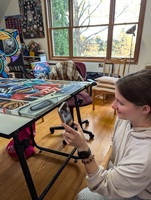 Teresa Greve Wolf Studio Visit (3)
Teresa Greve Wolf Studio Visit (3) Students from Curatorial Studies visit Teresa Greve Wolf Studio in her studio in Granger, IN.
-
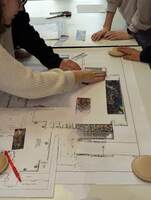 Teresa Greve Wolf Studio Visit (2)
Teresa Greve Wolf Studio Visit (2) Students from Curatorial Studies visit Teresa Greve Wolf Studio in her studio in Granger, IN.
-
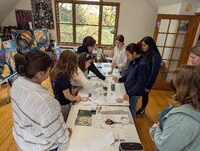 Teresa Greve Wolf Studio Visit (1)
Teresa Greve Wolf Studio Visit (1) Students from Curatorial Studies visit Teresa Greve Wolf Studio in her studio in Granger, IN.
-
 Teresa Greve Wolf
Teresa Greve Wolf Painting on large-scale canvases, often created by connecting multiple canvases together, Teresa Greve Wolf urges viewers to stop and take notice of the cause at hand. Her story draws the viewer in, and the issues she paints are very real. It is through her art she uses her voice in hope for positive change. Many of her pieces use mix media to emphasize and create another layer to her story. In her most recent piece, “Threatening Beauty,” Teresa uses a plastic film to create the waves of the ocean to emphasize how we are masking this global issue. In her piece “Women. Life. Freedom”, she incorporates fabrics, collaged imagery of women living in Iran, and a Hijab hanging from the canvas to call attention to recent human rights issues and current events.
Her use of bright bold colors is another way she tries to connect with the viewer. In her piece, “I can’t breathe,” she uses color to grab the viewers’ attention and creates a dramatic picture of the death of George Floyd. She paints bloody broken letters of Justice to re-emphasize how our system and our global society is desperately in need of change.
Her calling for change comes from living during the reign of Augusto Pinochet. Born in Santiago, Chile, Teresa and her husband left the country right around the time he came into power. Teresa states, “This was a difficult time for many because they could not speak their truth without mysteriously disappearing or getting thrown in jail.” Many of her pieces depict the struggles of the Chilean people during this time as well as her own struggles of missing her homeland.
-
 South Bend Museum of Art
South Bend Museum of Art For 75 years, SBMA has evolved alongside the city it serves. Today it offers over 15 exhibitions annually, maintains a permanent collection of more than 1,200 artworks, and provides educational programming that serves 2,000 adults and children each year. The museum is deeply committed to accessibility and inclusivity, ensuring that art is available to people of all ages and backgrounds through diverse educational programs, engaging exhibitions, and a welcoming community space.
-
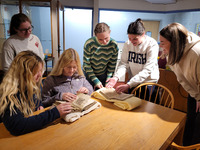 Our Rare Books, Our SMC: An Exhibit of Items Held at Saint Mary's College
Our Rare Books, Our SMC: An Exhibit of Items Held at Saint Mary's College In the spring of 2024, a group of fourteen students enrolled in ENLT 265 (Digital Humanities Project Lab: From Medieval Manuscripts to Digital Texts) and collaborated to produce this exhibit of items held in the Rare Book Room at Saint Mary's College. Throughout the course, the Rare Book Room served as our laboratory, with students learning about the development of text technologies from cuneiform tablets and medieval manuscripts to early print and nineteenth century art house productions. An introductory project asked students to recreate medieval manuscript pages with parchment and quill pens and to consider the significance of material form to our understanding of a text's meaning. Our attention then turned to thinking about how that materiality might be translated into digital contexts, and how we could raise attention on campus about the rich collection of rare books held in the Cushwa-Leighton Library.
-
 LGBTQ Center Oral History Project
LGBTQ Center Oral History Project Our HIST 392: Doing History: Oral and Public History Spring 2024 students learned the art of oral history interviewing before conducting oral histories with founders, employees, and attendees of South Bend's LGBTQ Center. The collection added to the Civil Rights Heritage Center's LGBTQ archival collection. The following semester, student Phoenix McClellan created an oral history listening session and posters about the LGBTQ Center's history, for the Center's future use.
-
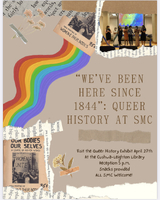 We've Been Here Since 1844: Queer History At SMC
We've Been Here Since 1844: Queer History At SMC Students in HIST 392: Doing History: Oral and Public History researched college archival documents and engaged in oral history interviewing before curating an exhibit on the college's queer history. The Doing History course is aimed at familiarizing students with what historians do to tell stories: from finding excellent primary sources to creating a visual culture analysis, along with contributing to an original oral history project stored at a local archive.
-
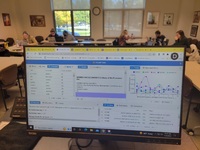 HUST 220 Class Session
HUST 220 Class Session Photo taken during a class session of HUST 220, Fall 2022.
-
 The Actual Things They Carried
The Actual Things They Carried In Tim O'Brien's novel, The Things They Carried, a collection of stories about U.S. soldiers' experiences during the Vietnam War, he focuses on the importance of inanimate objects. Often, the objects the soldiers carried with them helped them preserve their own truths and sense of identity as they grappled with the toils of warfare in the jungles of Vietnam. These objects and stories they tell often vary by the mission, superstition, necessity, and the soldiers' total awe for the things they carry.
-
 Sharing Stories from 1977
Sharing Stories from 1977 Sharing Stories from 1977 joins historians and technologists who share a strong interest in women's ways of engaging the political world. Our project documents and preserves the stories of NWC participants through biographies, oral histories, historical ephemera, demographic mapping, and interpretive essays.
-
 Listening to Pandemic Narratives 2 Podcast Episode
Listening to Pandemic Narratives 2 Podcast Episode Over the past two years, doctors Jamie Wagman and Julia Dauer from Saint Mary’s College collected local stories of those impacted by the worldwide Covid-19 pandemic. Last year, they gave a public presentation with clips from some of the narrators who graciously shared their stories. They did it again this past September at the Saint Joseph County Public Library with new narrators sharing a different set of stories. We shared the first presentation as a special on this feed last year, and we’re doing so again now. The full versions of these oral histories are preserved and accessible through the Civil Rights Heritage Center’s archives, and today we share the most recent public presentation. This episode was produced by Jamie Wagman and Julia Dauer from Saint Mary’s College, and Nathalie Villalobos and George Garner from the Indiana University South Bend Civil Rights Heritage Center.
 Teresa Greve Wolf Installation (8) Photo from "Teresa Greve Wolf: Art That Reflects the Times" in Moreau Gallery from Dec. 2 through Dec. 11 2024.
Teresa Greve Wolf Installation (8) Photo from "Teresa Greve Wolf: Art That Reflects the Times" in Moreau Gallery from Dec. 2 through Dec. 11 2024. Teresa Greve Wolf Installation (7) Photo from "Teresa Greve Wolf: Art That Reflects the Times" in Moreau Gallery from Dec. 2 through Dec. 11 2024.
Teresa Greve Wolf Installation (7) Photo from "Teresa Greve Wolf: Art That Reflects the Times" in Moreau Gallery from Dec. 2 through Dec. 11 2024. Teresa Greve Wolf Installation (6) Photo from "Teresa Greve Wolf: Art That Reflects the Times" in Moreau Gallery from Dec. 2 through Dec. 11 2024.
Teresa Greve Wolf Installation (6) Photo from "Teresa Greve Wolf: Art That Reflects the Times" in Moreau Gallery from Dec. 2 through Dec. 11 2024. Teresa Greve Wolf Installation (5) Photo from "Teresa Greve Wolf: Art That Reflects the Times" in Moreau Gallery from Dec. 2 through Dec. 11 2024.
Teresa Greve Wolf Installation (5) Photo from "Teresa Greve Wolf: Art That Reflects the Times" in Moreau Gallery from Dec. 2 through Dec. 11 2024. Teresa Greve Wolf Installation (4) Photo from "Teresa Greve Wolf: Art That Reflects the Times" in Moreau Gallery from Dec. 2 through Dec. 11 2024.
Teresa Greve Wolf Installation (4) Photo from "Teresa Greve Wolf: Art That Reflects the Times" in Moreau Gallery from Dec. 2 through Dec. 11 2024. Teresa Greve Wolf Installation (3) Photo from "Teresa Greve Wolf: Art That Reflects the Times" in Moreau Gallery from Dec. 2 through Dec. 11 2024.
Teresa Greve Wolf Installation (3) Photo from "Teresa Greve Wolf: Art That Reflects the Times" in Moreau Gallery from Dec. 2 through Dec. 11 2024. Teresa Greve Wolf Installation (2) Photo from "Teresa Greve Wolf: Art That Reflects the Times" in Moreau Gallery from Dec. 2 through Dec. 11 2024.
Teresa Greve Wolf Installation (2) Photo from "Teresa Greve Wolf: Art That Reflects the Times" in Moreau Gallery from Dec. 2 through Dec. 11 2024. Teresa Greve Wolf Installation (1) Photo from "Teresa Greve Wolf: Art That Reflects the Times" in Moreau Gallery from Dec. 2 through Dec. 11 2024.
Teresa Greve Wolf Installation (1) Photo from "Teresa Greve Wolf: Art That Reflects the Times" in Moreau Gallery from Dec. 2 through Dec. 11 2024. Maquette (4) Physical model of maquette created for Curatorial Studies, Fall 2024.
Maquette (4) Physical model of maquette created for Curatorial Studies, Fall 2024. Maquette (3) Physical model of maquette created for Curatorial Studies, Fall 2024.
Maquette (3) Physical model of maquette created for Curatorial Studies, Fall 2024. Maquette (2) Physical model of maquette created for Curatorial Studies, Fall 2024.
Maquette (2) Physical model of maquette created for Curatorial Studies, Fall 2024. Preparing Greve Wolf Installation Students work to set up "Teresa Greve Wolf: Art That Reflects the Times" in Moreau Gallery.
Preparing Greve Wolf Installation Students work to set up "Teresa Greve Wolf: Art That Reflects the Times" in Moreau Gallery. Teresa Greve Wolf Studio Visit (4) Students from Curatorial Studies visit Teresa Greve Wolf Studio in her studio in Granger, IN.
Teresa Greve Wolf Studio Visit (4) Students from Curatorial Studies visit Teresa Greve Wolf Studio in her studio in Granger, IN. Teresa Greve Wolf Studio Visit (3) Students from Curatorial Studies visit Teresa Greve Wolf Studio in her studio in Granger, IN.
Teresa Greve Wolf Studio Visit (3) Students from Curatorial Studies visit Teresa Greve Wolf Studio in her studio in Granger, IN. Teresa Greve Wolf Studio Visit (2) Students from Curatorial Studies visit Teresa Greve Wolf Studio in her studio in Granger, IN.
Teresa Greve Wolf Studio Visit (2) Students from Curatorial Studies visit Teresa Greve Wolf Studio in her studio in Granger, IN. Teresa Greve Wolf Studio Visit (1) Students from Curatorial Studies visit Teresa Greve Wolf Studio in her studio in Granger, IN.
Teresa Greve Wolf Studio Visit (1) Students from Curatorial Studies visit Teresa Greve Wolf Studio in her studio in Granger, IN. Teresa Greve Wolf Painting on large-scale canvases, often created by connecting multiple canvases together, Teresa Greve Wolf urges viewers to stop and take notice of the cause at hand. Her story draws the viewer in, and the issues she paints are very real. It is through her art she uses her voice in hope for positive change. Many of her pieces use mix media to emphasize and create another layer to her story. In her most recent piece, “Threatening Beauty,” Teresa uses a plastic film to create the waves of the ocean to emphasize how we are masking this global issue. In her piece “Women. Life. Freedom”, she incorporates fabrics, collaged imagery of women living in Iran, and a Hijab hanging from the canvas to call attention to recent human rights issues and current events. Her use of bright bold colors is another way she tries to connect with the viewer. In her piece, “I can’t breathe,” she uses color to grab the viewers’ attention and creates a dramatic picture of the death of George Floyd. She paints bloody broken letters of Justice to re-emphasize how our system and our global society is desperately in need of change. Her calling for change comes from living during the reign of Augusto Pinochet. Born in Santiago, Chile, Teresa and her husband left the country right around the time he came into power. Teresa states, “This was a difficult time for many because they could not speak their truth without mysteriously disappearing or getting thrown in jail.” Many of her pieces depict the struggles of the Chilean people during this time as well as her own struggles of missing her homeland.
Teresa Greve Wolf Painting on large-scale canvases, often created by connecting multiple canvases together, Teresa Greve Wolf urges viewers to stop and take notice of the cause at hand. Her story draws the viewer in, and the issues she paints are very real. It is through her art she uses her voice in hope for positive change. Many of her pieces use mix media to emphasize and create another layer to her story. In her most recent piece, “Threatening Beauty,” Teresa uses a plastic film to create the waves of the ocean to emphasize how we are masking this global issue. In her piece “Women. Life. Freedom”, she incorporates fabrics, collaged imagery of women living in Iran, and a Hijab hanging from the canvas to call attention to recent human rights issues and current events. Her use of bright bold colors is another way she tries to connect with the viewer. In her piece, “I can’t breathe,” she uses color to grab the viewers’ attention and creates a dramatic picture of the death of George Floyd. She paints bloody broken letters of Justice to re-emphasize how our system and our global society is desperately in need of change. Her calling for change comes from living during the reign of Augusto Pinochet. Born in Santiago, Chile, Teresa and her husband left the country right around the time he came into power. Teresa states, “This was a difficult time for many because they could not speak their truth without mysteriously disappearing or getting thrown in jail.” Many of her pieces depict the struggles of the Chilean people during this time as well as her own struggles of missing her homeland. South Bend Museum of Art For 75 years, SBMA has evolved alongside the city it serves. Today it offers over 15 exhibitions annually, maintains a permanent collection of more than 1,200 artworks, and provides educational programming that serves 2,000 adults and children each year. The museum is deeply committed to accessibility and inclusivity, ensuring that art is available to people of all ages and backgrounds through diverse educational programs, engaging exhibitions, and a welcoming community space.
South Bend Museum of Art For 75 years, SBMA has evolved alongside the city it serves. Today it offers over 15 exhibitions annually, maintains a permanent collection of more than 1,200 artworks, and provides educational programming that serves 2,000 adults and children each year. The museum is deeply committed to accessibility and inclusivity, ensuring that art is available to people of all ages and backgrounds through diverse educational programs, engaging exhibitions, and a welcoming community space. Our Rare Books, Our SMC: An Exhibit of Items Held at Saint Mary's College In the spring of 2024, a group of fourteen students enrolled in ENLT 265 (Digital Humanities Project Lab: From Medieval Manuscripts to Digital Texts) and collaborated to produce this exhibit of items held in the Rare Book Room at Saint Mary's College. Throughout the course, the Rare Book Room served as our laboratory, with students learning about the development of text technologies from cuneiform tablets and medieval manuscripts to early print and nineteenth century art house productions. An introductory project asked students to recreate medieval manuscript pages with parchment and quill pens and to consider the significance of material form to our understanding of a text's meaning. Our attention then turned to thinking about how that materiality might be translated into digital contexts, and how we could raise attention on campus about the rich collection of rare books held in the Cushwa-Leighton Library.
Our Rare Books, Our SMC: An Exhibit of Items Held at Saint Mary's College In the spring of 2024, a group of fourteen students enrolled in ENLT 265 (Digital Humanities Project Lab: From Medieval Manuscripts to Digital Texts) and collaborated to produce this exhibit of items held in the Rare Book Room at Saint Mary's College. Throughout the course, the Rare Book Room served as our laboratory, with students learning about the development of text technologies from cuneiform tablets and medieval manuscripts to early print and nineteenth century art house productions. An introductory project asked students to recreate medieval manuscript pages with parchment and quill pens and to consider the significance of material form to our understanding of a text's meaning. Our attention then turned to thinking about how that materiality might be translated into digital contexts, and how we could raise attention on campus about the rich collection of rare books held in the Cushwa-Leighton Library. LGBTQ Center Oral History Project Our HIST 392: Doing History: Oral and Public History Spring 2024 students learned the art of oral history interviewing before conducting oral histories with founders, employees, and attendees of South Bend's LGBTQ Center. The collection added to the Civil Rights Heritage Center's LGBTQ archival collection. The following semester, student Phoenix McClellan created an oral history listening session and posters about the LGBTQ Center's history, for the Center's future use.
LGBTQ Center Oral History Project Our HIST 392: Doing History: Oral and Public History Spring 2024 students learned the art of oral history interviewing before conducting oral histories with founders, employees, and attendees of South Bend's LGBTQ Center. The collection added to the Civil Rights Heritage Center's LGBTQ archival collection. The following semester, student Phoenix McClellan created an oral history listening session and posters about the LGBTQ Center's history, for the Center's future use. We've Been Here Since 1844: Queer History At SMC Students in HIST 392: Doing History: Oral and Public History researched college archival documents and engaged in oral history interviewing before curating an exhibit on the college's queer history. The Doing History course is aimed at familiarizing students with what historians do to tell stories: from finding excellent primary sources to creating a visual culture analysis, along with contributing to an original oral history project stored at a local archive.
We've Been Here Since 1844: Queer History At SMC Students in HIST 392: Doing History: Oral and Public History researched college archival documents and engaged in oral history interviewing before curating an exhibit on the college's queer history. The Doing History course is aimed at familiarizing students with what historians do to tell stories: from finding excellent primary sources to creating a visual culture analysis, along with contributing to an original oral history project stored at a local archive. HUST 220 Class Session Photo taken during a class session of HUST 220, Fall 2022.
HUST 220 Class Session Photo taken during a class session of HUST 220, Fall 2022. The Actual Things They Carried In Tim O'Brien's novel, The Things They Carried, a collection of stories about U.S. soldiers' experiences during the Vietnam War, he focuses on the importance of inanimate objects. Often, the objects the soldiers carried with them helped them preserve their own truths and sense of identity as they grappled with the toils of warfare in the jungles of Vietnam. These objects and stories they tell often vary by the mission, superstition, necessity, and the soldiers' total awe for the things they carry.
The Actual Things They Carried In Tim O'Brien's novel, The Things They Carried, a collection of stories about U.S. soldiers' experiences during the Vietnam War, he focuses on the importance of inanimate objects. Often, the objects the soldiers carried with them helped them preserve their own truths and sense of identity as they grappled with the toils of warfare in the jungles of Vietnam. These objects and stories they tell often vary by the mission, superstition, necessity, and the soldiers' total awe for the things they carry. Sharing Stories from 1977 Sharing Stories from 1977 joins historians and technologists who share a strong interest in women's ways of engaging the political world. Our project documents and preserves the stories of NWC participants through biographies, oral histories, historical ephemera, demographic mapping, and interpretive essays.
Sharing Stories from 1977 Sharing Stories from 1977 joins historians and technologists who share a strong interest in women's ways of engaging the political world. Our project documents and preserves the stories of NWC participants through biographies, oral histories, historical ephemera, demographic mapping, and interpretive essays. Listening to Pandemic Narratives 2 Podcast Episode Over the past two years, doctors Jamie Wagman and Julia Dauer from Saint Mary’s College collected local stories of those impacted by the worldwide Covid-19 pandemic. Last year, they gave a public presentation with clips from some of the narrators who graciously shared their stories. They did it again this past September at the Saint Joseph County Public Library with new narrators sharing a different set of stories. We shared the first presentation as a special on this feed last year, and we’re doing so again now. The full versions of these oral histories are preserved and accessible through the Civil Rights Heritage Center’s archives, and today we share the most recent public presentation. This episode was produced by Jamie Wagman and Julia Dauer from Saint Mary’s College, and Nathalie Villalobos and George Garner from the Indiana University South Bend Civil Rights Heritage Center.
Listening to Pandemic Narratives 2 Podcast Episode Over the past two years, doctors Jamie Wagman and Julia Dauer from Saint Mary’s College collected local stories of those impacted by the worldwide Covid-19 pandemic. Last year, they gave a public presentation with clips from some of the narrators who graciously shared their stories. They did it again this past September at the Saint Joseph County Public Library with new narrators sharing a different set of stories. We shared the first presentation as a special on this feed last year, and we’re doing so again now. The full versions of these oral histories are preserved and accessible through the Civil Rights Heritage Center’s archives, and today we share the most recent public presentation. This episode was produced by Jamie Wagman and Julia Dauer from Saint Mary’s College, and Nathalie Villalobos and George Garner from the Indiana University South Bend Civil Rights Heritage Center.